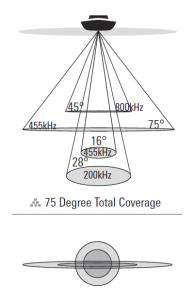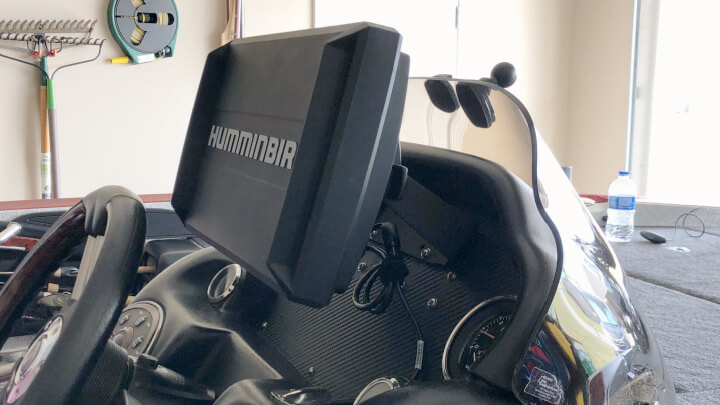Many people tend to think of the Fish ID feature on fish finders as somewhat of a gimmick. While it’s true the fish finder can interpret the sonar signals and display false positive fish symbols, using this feature can actually take some of the guesswork out of the game.
Humminbird Fish ID uses a signal processing algorithm to read the sonar signals, and if a particular return meets the specific requirements to be identified as a fish, only then does is display a fish symbol. The algorithm will also classify the fish in terms of size and display it in one of three sizes.
There are a few scenarios where Fish ID can be a real asset to your fishing. One is vertical fishing over a school of fish, and the other is detecting fish that are tucked within cover such as tree limbs and brush piles.
Vertical Fishing with Fish ID
Have you ever come across a large school of fish, tried to jig or drop shot for them, but were never able to get a bite?
This can be because your screen is showing all the fish, but not where in relation to your vertical presentation. Humminbird Fish ID can help in this case because the fish symbol will have a depth marker on it, and it will tell you which sonar cone the fish is inside.
To do this, you need to switch on Dual Beam. When a fish is in the wide beam (83kHz on sonar models, 455kHz on DI models) the fish symbol will be blue. When a fish is in the narrow beam (200kHz on sonar models, and 200kHz on DI models), the fish symbol will be orange.
Knowing this, you can effectively target only the fish that are more directly under the boat, and therefore your bait. By knowing the depth and location of the nearest fish, you are no longer fishing blind!

When you want to try to catch the fish identified in the wide beams, you have the problem of not knowing which side of the boat they are on.
This is where Side Imaging or 360 Imaging can come in handy. Side Imaging will show the fish either on the left or on the right side image, such as in the screenshot below.
Similarly, the fish will show up in the circular water column on the 360, giving you the side and angle at which to cast. Image Credit goes to TritonMike.
Related: How Fish Finders Work and How to Read Them
Detecting Fish within Cover
Most people don’t realize that Fish ID can detect fish within pieces of cover such as submerged trees and brush. Knowing this, you drive over some of your favorite brush and trees with Fish ID on, and only stop when the fish finder detects larger fish present.
In this screenshot, the Humminbird detected 3 larger fish within the submerged tree. The fisherman stopped and caught all three bass, including several smaller fish that were too small to be given a Fish ID symbol. Image Credit: Wayne P.
Give these tips a try the next time you are on the lake and you will develop some confidence in the techniques. It can be a time saver when searching for catchable fish.
Garmin Fish Symbols
Garmin Echomap and Striker fish finder have a similar function simply called Fish Symbols. Striker and Echomap Fish Symbols look and work very much like Humminbird’s, except instead of overlaying on top of the sonar return, they replace the return with the Fish Symbol. They can be adjusted or turned off entirely in the menus.










Leave a reply